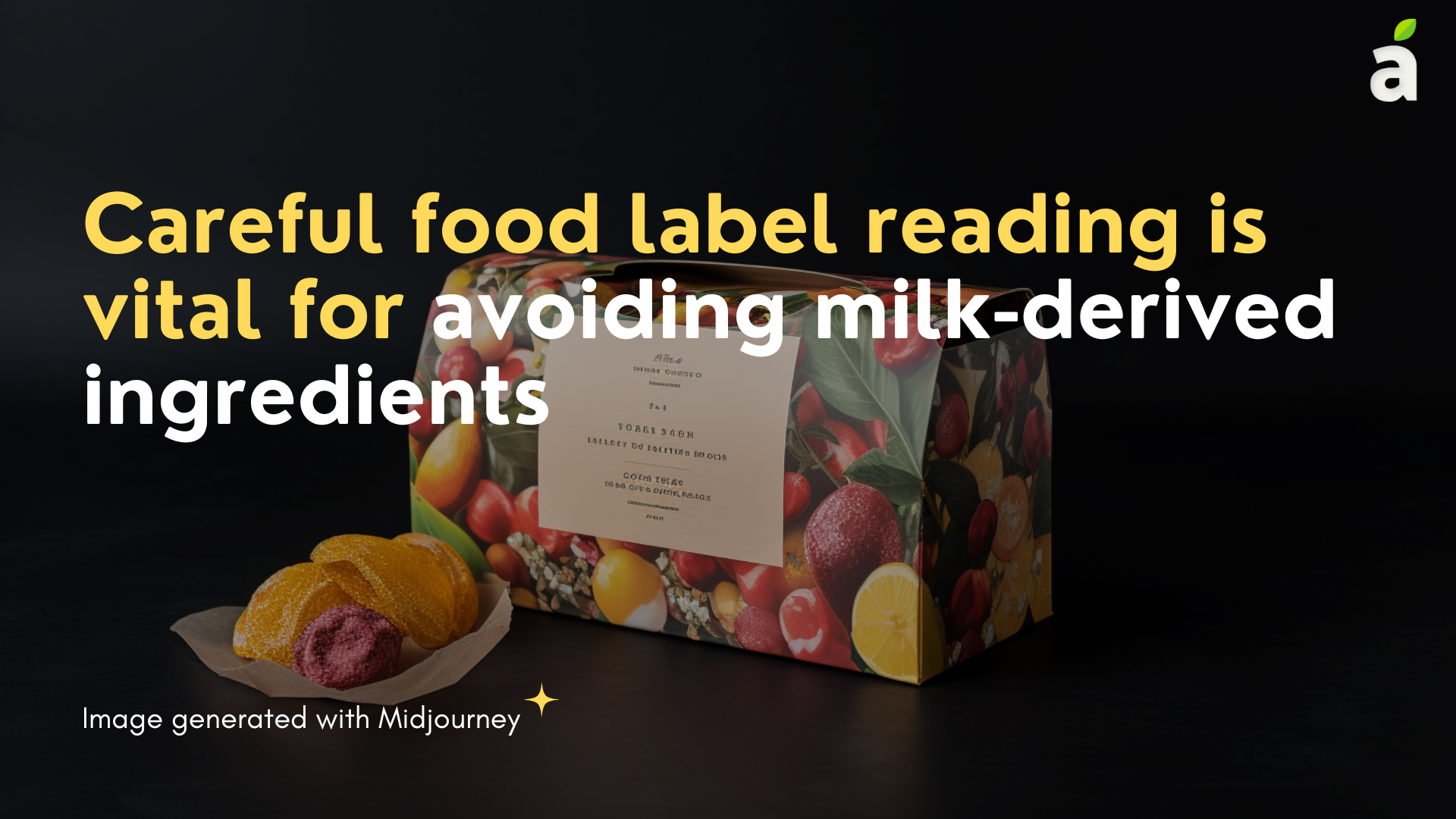Published Date January 24, 2003
From Moo to Allergen: A Journey into Milk Allergy
By Naurin Ansari
3 min read
Last update date: January 24, 2003

If you suspect you have a milk allergy, it's important to understand the condition and how to manage it. Let's explore key aspects of milk allergy, including how to recognize its signs, the timing of symptoms, methods of diagnosis, distinguishing it from lactose intolerance, and tips for reading food labels to ensure a milk-free diet.
How can you know if you are allergic to milk?
To determine if you have a milk allergy, it's important to recognize the symptoms. Milk allergy is characterized by an atypical immune response when you consume milk or milk-based products from cows and other mammals like sheep, goats, or buffalo.
Pay attention to symptoms such as abdominal pain, vomiting, diarrhoea, hives, eczema, wheezing, or nasal congestion. If you experience any of these symptoms after consuming milk or milk-based products, it is advisable to seek professional medical advice for an accurate evaluation and diagnosis.[1]
How Long Does a Milk Allergy Take to Show Up?
If you have a milk allergy, you may notice that symptoms often appear shortly after consuming milk or milk protein-containing items. It's important to be aware that anaphylaxis, a severe and life-threatening allergic reaction, is a potential concern.
The timing of milk allergy symptoms can vary from person to person. Some individuals experience immediate symptoms within minutes of consuming milk, while others may have a delayed response that takes hours or even up to a day to manifest. Stay attentive to these timing patterns and seek medical assistance if needed.[2]
How Is Milk Allergy Diagnosed?
When diagnosing a milk allergy, healthcare providers take a comprehensive approach that involves evaluating your symptoms, ruling out other potential medical conditions, and conducting various tests. They may use methods such as stool examination, blood tests, and allergy tests like skin prick tests and patch tests.
Your medical history and physical examination are crucial in the diagnosis process. They help inunderstand the pattern of your symptoms and ruleut other possible causes. Skin prick tests are performed to confirm a milk allergy by exposing your skin to milk allergens and observing for an allergic reaction.
Blood tests measure specific antibodies associated with milk allergy and provide valuable diagnostic information. In some cases, oral food challenges may be conducted under medical supervision to observe and assess your reaction to milk ingestion. These tests help healthcare professionals make an accurate diagnosis.[3]
Milk Allergy and Lactose Intolerance: What Is the Difference?
You need to differentiate between milk allergy and lactose intolerance. Milk allergy is more severe, with allergic reactions occurring within minutes to a couple of hours after consuming milk. While cow's milk is commonly associated with milk allergies, other types of milk, such as soy milk, can also trigger allergic reactions.
The underlying causes of milk allergy and lactose intolerance are different. Milk allergy involves an immune response to milk proteins, whereas lactose intolerance is the inability to digest lactose, a sugar found in milk.
Milk allergy can lead to a range of allergic symptoms, while lactose intolerance primarily causes digestive issues like bloating, gas, and diarrhoea. Understanding these distinctions is crucial for managing your condition properly and making necessary dietary adjustments.[4]
How to Read Labels for a Milk-Free Diet
To maintain a milk-free diet, it's important for you to avoid foods that contain ingredients derived from milk. This includes whole milk, low-fat milk, non-fat milk, skim milk, butter, artificial butter flavour, butterfat, butter oil, casein, casein hydrolysates, and various forms of caseinates (such as ammonium, calcium, magnesium, potassium, and sodium caseinates).
You should also steer clear of milk-containing items like cottage cheese, cream, pudding, ghee, hydrolysates (such as casein, milk protein, protein, whey, and whey protein), lactalbumin, lactalbumin phosphate, lactoglobulin, lactoferrin, lactose, and lactulose.
Reading food labels carefully is crucial for identifying and avoiding milk-derived ingredients. Pay attention to terms like whey, casein, and lactoglobulin in the ingredient lists. It's also important to be aware of the risk of cross-contamination, as milk allergens may be present in products processed in facilities that handle milk. Choosing certified milk-free products and seeking guidance from a registered dietitian can greatly assist you in successfully navigating a milk-free diet.[4]
Takeaway
Managing milk allergy is a significant concern that requires your attention and proper understanding. By being aware of the symptoms, seeking a timely diagnosis, distinguishing between milk allergy and lactose intolerance, and diligently reading food labels, you can effectively navigate a milk-free lifestyle. Remember to consult healthcare professionals for personalized guidance and support in managing your milk allergy and maintaining a nutritious diet.
References
- https://www.mayoclinic.org/diseases-conditions/milk-allergy/symptoms-causes/syc-20375101
- https://www.chop.edu/conditions-diseases/milk-allergies#:~:text=Children%20who%20have%20a%20milk,a%20life%2Dthreatening%20allergic%20response
- https://www.medicinenet.com/what_are_the_symptoms_of_a_milk_allergy_in_adults/article.htm
- https://www.hopkinsmedicine.org/health/wellness-and-prevention/milk-allergy-diet
Keep reading

Pumpkins: From Gourds to Goodness
By Naurin Ansari

9 months to bake a bun
I have heard people refer to a baking bun when talking about pregnancy. A bun certainly doesn’t take about 9 months to be baked.
By Hetvi Shah

From Seed to Fruit: The Power of Watermelon
By Naurin Ansari

Eat Shakahari to Lose a Few Kilos
By Hetvi Shah
Choose Healthy With Us.
Know the real truth about your food. Stay informed and healthy, for free.

Download the App Now
Certified nutritionists trust our food recommendations. Safe to say, so can you :)











